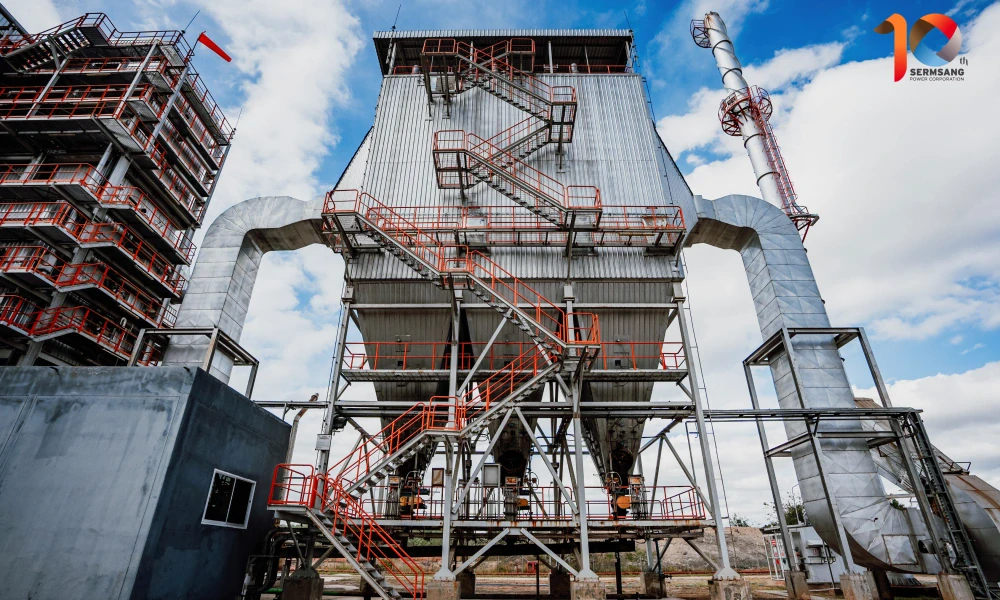09 September 2025
Impact Reduction and Pollution Abatement: Driving Clean Energy with Technology and Innovation

Sermsang Power Corporation (SSP) is one of the fastest-growing renewable energy companies in the region. Its diverse portfolio includes solar power plants, rooftop solar power plants, wind power plants, biomass power plants, and waste-to-energy power plants, with a total contracted capacity of over 285 eMW. This achievement not only generates clean energy but also reflects the company's firm commitment to mitigating environmental impact and reducing greenhouse gas (GHG) emissions.
Clean Technology for GHG Emission Reduction
Reducing GHG emissions is a core strategic objective for SSP. All projects are designed to maximize resource efficiency and minimize dependence on fossil fuels. For example:
- Solar and Wind Power Plants: These facilities produce electricity with zero direct emissions, effectively offsetting the CO2 output of traditional energy sources.
- Biomass Power Plants: Advanced combustion control technologies have been developed to enhance energy production efficiency and reduce associated GHG emissions.
- Waste-to-Energy Power Plants: This process reduces the volume of waste that requires landfill disposal, which in turn cuts down on methane emissions from traditional waste management. The electricity generated also serves as an alternative to fossil fuels.
These measures actively support the Net Zero goals toward which the global energy industry is moving.
Systematic Pollution Management
Under the SSP Green Future initiative, the company has installed advanced pollution control technologies. Key among these are Electrostatic Precipitators (ESPs), which can capture over 99% of fine particulate matter. This is integrated with a real-time combustion monitoring system to optimize fuel-to-air balance and prevent excessive energy use. The result is a significant reduction in the release of harmful gases such as NOx, SOx, and PM, which affect air quality and community health.
Innovation for a Circular Economy
SSP has also pioneered a project to recycle "reject water" from the RO (reverse osmosis) systems at its biomass power plants. This water is repurposed to capture and manage fly ash, allowing for a near-complete reduction in the use of fresh water. This initiative aligns with the circular economy concept, benefiting the environment while simultaneously lowering operational costs.
Verification and Transparency
SSP’s environmental and GHG emissions data are independently verified by accredited third-party organizations in accordance with international standards, including AA1000 AP (2018), ISAE 3000, and ISAE 3410. This ensures that the reported information is accurate and reliable, allowing the company to communicate its progress to investors and stakeholders with a verifiable Assurance Standard.
Tangible Outcomes
- Reduced reliance on fossil fuels through an increasing proportion of renewable energy.
- Continuous reduction of air pollutants with ESP systems and real-time monitoring.
- Creation of a balance between energy and water resources through a recycling project.
- Support for the transition to Net Zero in the energy sector across Thailand and the wider Asian region.
Sermsang Power demonstrates that reducing greenhouse gas emissions and controlling pollution is not a burden but an opportunity to build a competitive business advantage, enhance public trust, and reduce environmental impact. By investing in measurable clean technology and innovation, SSP is a leader in driving clean energy, not just by producing electricity, but by building a more sustainable future for the planet.
